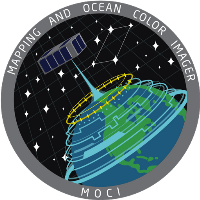| Spacecraft name | MOCI (Multi-view Onboard Computational Imager, Mapping and Ocean Color Imager) |
|---|---|
| Spacecraft type | CubeSat |
| Units or mass | 6U |
| Status | not launched, expected in 2025 |
| Launcher | not launched |
| Organisation | University of Georgia |
| Institution | University |
| Entity | Academic / Education |
| Country | US |
| Oneliner |
Generate 3D point clouds of large scale structures on the Earth's surface. |
| Description |
Perform structure from motion (SfM) in Low Earth Orbit (LEO) and generate 3D point clouds of large scale structures on the Earth's surface. First time a CubeSat has specialized in building 3D models using structure from motion. Researchers can use this data to make better predictions about climate models, environmental impacts, measure natural resources, and distinguish geographical changes over time. The secondary mission of the MOCI cubesat is to gather ocean color data from Low Earth Orbit and track the health of the Georgia coast. This data will help researchers better assess how climate change is effecting the Georgia coast. It may also be possible to use MOCI's SfM capabilities to detect the relative change in water level of various coastlines and lakes. The MOCI mission will also identify and map or image surface objects, including but not limited to coastal environment phenomena, while training students in STEM-related fields. Efficient data compression, feature detection, feature matching, and SfM processing techniques of space-based imagery will be performed on board the spacecraft as a proof-of-concept of high performance, on board processing capabilities. 3D models produced by the MOCI satellite will take the form of Digital Surface Models (DSM) as their end product for quick data downlink. The secondary goals of the project will be to lay the foundations for a self-sustaining Small Satellite Research Laboratory (SSRL) at UGA involving numerous students at the University and creating a free repository of imagery. In addition, the SSRL will engage with the public through guest lectures and the development of outreach programs such as workshops, instructional YouTube videos, educational podcasts, and performing guest lectures at local schools and events. For the current mission MOCI shall: |
| Notes |
One of two Air Force Research Lab winners |
| Sources | [1] [2] [3] [4] [5] [6] |
| Photo sources | [1] |
Last modified: 2024-12-14

